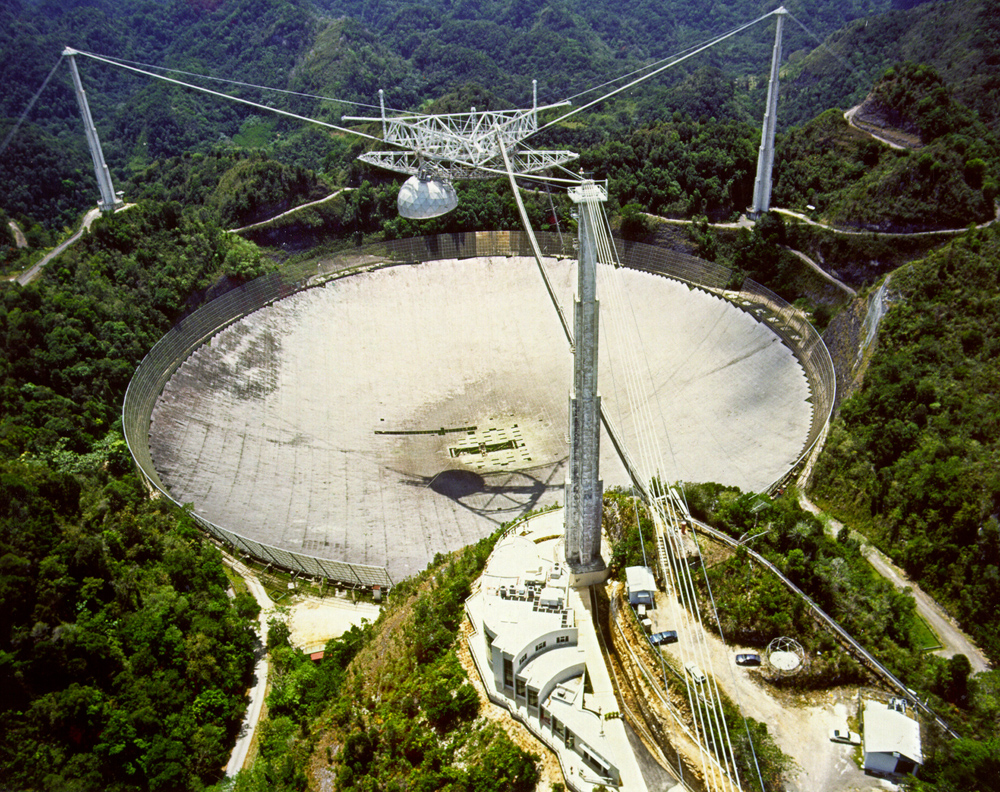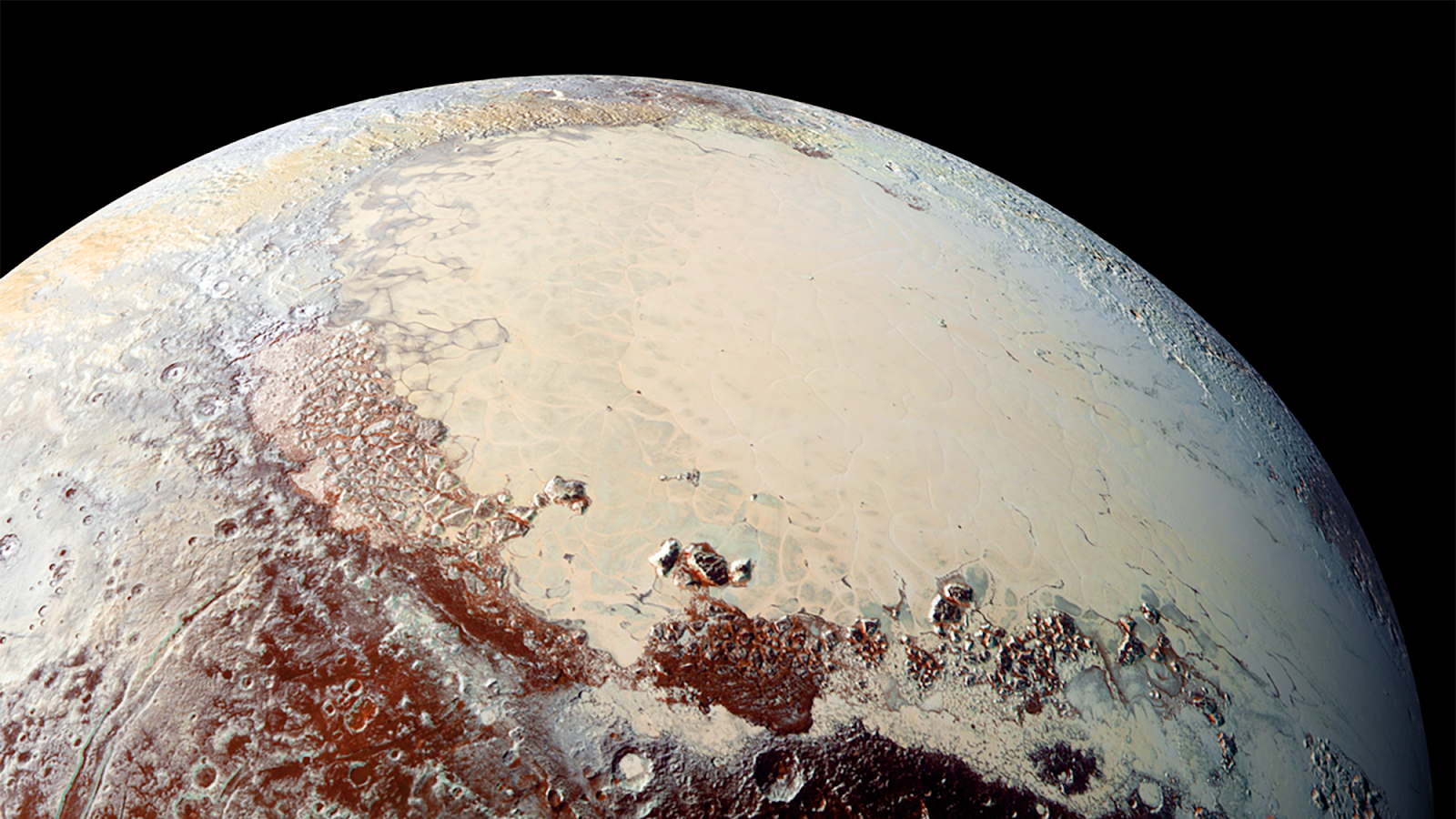Drake Equation: Estimating the Odds of Finding E.T.

The Drake Equation is used to estimate the number of communicating civilizations in our galaxy, or more simply put, the odds of finding intelligent life in the Milky Way.
First proposed by radio astronomer Frank Drake in 1961, the equation calculates the number of communicating civilizations by multiplying several variables. It's usually written, according to the Search for Extraterrestrial Intelligence (SETI), as:
N = The number of civilizations in the Milky Way galaxy whose electromagnetic emissions are detectable.
R* = The rate of formation of stars suitable for the development of intelligent life.
fp = The fraction of those stars with planetary systems.
ne = The number of planets, per solar system, with an environment suitable for life.
fl = The fraction of suitable planets on which life actually appears.
Breaking space news, the latest updates on rocket launches, skywatching events and more!
fi = The fraction of life bearing planets on which intelligent life emerges.
fc = The fraction of civilizations that develop a technology that releases detectable signs of their existence into space.
L = The length of time such civilizations release detectable signals into space.
The challenge (at least for now) is that astronomers don't have firm numbers on any of those variables, so any calculation of the Drake Equation remains a rough estimate for now. There have been, however, discoveries in some of these fields that give astronomers a better chance of finding the answer.
The recent discoveries of rocky worlds near Proxima Centauri (a star of the Alpha Centauri system) and TRAPPIST-1 have increased the public's attention on the search for life. These stars, however, are red dwarfs that might be too volatile for life. More study is needed to understand where life might be possible, and whether it could persist long enough to communicate with other civilizations.
Exoplanet discoveries
Astronomers certainly could imagine the existence of other planets outside the solar system in 1961, but it took until 1995 until the first confirmed exoplanet was found around a main-sequence star Called 51 Pegasi b, the discovery ushered in a new era when astronomers were able to track down many other planets across the universe.
Traditionally, planets have been found through two methods: watching them transit across a star (which causes a dimming that can be measured from Earth) or examining the gravitational wobbles the planets induce as they orbit around their parent star. More recently, a technique called "verification by multiplicity" allows astronomers to quickly identify multiple-planet systems.
Estimating the total number of planets in the universe is difficult, but one statistical study suggests that in the Milky Way, each star has an average of 1.6 planets – yielding 160 billion alien planets in our home galaxy. (The study used a technique called gravitational lensing that observes changes in light curves when a relatively nearby star passes in front of more distant objects.) [Related: 13 Ways to Hunt Intelligent Aliens]
As of March 2018, more than 3,708 exoplanets have been confirmed. The vast bulk of them were due to an observatory called the Kepler Space Telescope, which scrutinized a single spot in the Cygnus constellation between 2009 and 2013 before switching to its K2 mission, which rotated between different locations in the sky. Plumbing the data, astronomers continue to make discoveries from the information.
Suitable for life?
While Jupiter-sized planets are easier to spot in telescopes due to their large size and effect on their parent star, emerging research from the Kepler Space Telescope suggests that rocky planets are extremely common. A slew of Kepler discoveries announced in February 2014, for example, mainly contained super-Earths, or planets that are slightly larger than Earth and are considered by many astronomers to be habitable under the right conditions. ("Habitability" is usually defined as the zone around a star in which a rocky planet can maintain liquid water on the surface.)
Among the planets discovered by all telescopes, however, only a tiny fraction of them are likely to have an environment suitable for life. Astronomers can't measure this metric for sure yet, but a few factors likely come into play, such as how close a planet is to its parent star and what its atmosphere contains.
As of March 2018, the Habitable Exoplanets Catalog has 53 planets that "optimistically" could be suitable for life, and among those, 13 that are more likely to be habitable. The project is a part of the Planetary Habitability Laboratory at the University of Puerto Rico at Arecibo.
"These are artistic representations of all the planets around other stars (exoplanets) with any potential to support surface life as we know it," the catalog states below an illustration of the planets. "All of them are larger than Earth and we are not certain about their composition and habitability yet. We only know that they seem to have the right size and orbit to support surface liquid water. ." [Related: 5 Bold Claims of Alien Life]
Finding life outside of Earth — even microbial life — would be an important step toward better understanding the Drake Equation. Astronomers in fact have not given up on finding life within our own solar system. There are several areas that could host habitable environments now, or did in the past, such as the planet Mars or Jupiter's moon Europa.
A next step would be determining how to send a message to extraterrestrials and whether they could receive or understand it. On a small scale, astronomers have beamed messages to the stars and in a few cases, put discs on board spacecraft (such as Voyager) for anyone in the neighborhood to read and potentially find Earth for further communications.
Red dwarf stars
The catalog of known exoplanets also contains a number of planets circling red dwarf stars, which are smaller and dimmer than our own sun. It was easier to spot a planet blocking the sun as it goes across its face, from Kepler's past vantage point. It also was easier to confirm if the planet was indeed a planet, since a planet orbiting a smaller star will exert a stronger tug visible in radial velocity measurements.
Since red dwarfs produce less energy than the sun, any rocky planets in the habitable zone must huddle closer to the star to get enough heat to maintain liquid water on the surface. Two discoveries in particular attracted a lot of public attention. In 2016, astronomers discovered a rocky planet orbiting Proxima Centauri, a member of the Alpha Centauri star system that is only four light-years from Earth. Then in 2017, seven Earth-sized rocky planets were confirmed around the star TRAPPIST-1, which is only 40 light-years from Earth. Some of those planets may be in the habitable zone.
Emerging research on red dwarf stars, however, suggests they may not be very friendly for life. In the example of Proxima Centauri b, the planet is so close to its star that scientists suggest it may be tidally locked. This means one side of the planet always faces the star, and the other side always faces space. One side of the planet would be very hot, and one side of the planet very cold, unless there are winds to distribute the heat around. These conditions are challenging for life.
Even red dwarf stars in general may be troublesome locations. They are more volatile than our sun, particularly when they are young. The stars can send out flares and also coronal mass ejections, which are charged particles. Over time, CMEs can slowly rip away an atmosphere by removing molecules from the top, according to 2017 studies led by the NASA Goddard Space Flight Center in Maryland. Even if a star doesn't send out CMEs, there's a chance it will blast out X-ray radiation, which could kill any life on the surface.
Astronomers are carrying out studies of red dwarf stars to determine how dangerous they may be, but further studies of these systems may require future telescopes. Starting in 2018, NASA's TESS (Transiting Exoplanet Survey Satellite) will study closer and brighter stars than Kepler did, potentially generating dozens of potentially habitable planets. And the agency's James Webb Space Telescope will launch no earlier than 2020, with the ability to look at some planets' atmospheres in the infrared to learn more about their composition. Meanwhile, the European Extremely Large Telescope (E-ELT) is under construction in Chile, with first light expected in 2024.
Join our Space Forums to keep talking space on the latest missions, night sky and more! And if you have a news tip, correction or comment, let us know at: community@space.com.

Elizabeth Howell (she/her), Ph.D., was a staff writer in the spaceflight channel between 2022 and 2024 specializing in Canadian space news. She was contributing writer for Space.com for 10 years from 2012 to 2024. Elizabeth's reporting includes multiple exclusives with the White House, leading world coverage about a lost-and-found space tomato on the International Space Station, witnessing five human spaceflight launches on two continents, flying parabolic, working inside a spacesuit, and participating in a simulated Mars mission. Her latest book, "Why Am I Taller?" (ECW Press, 2022) is co-written with astronaut Dave Williams.
